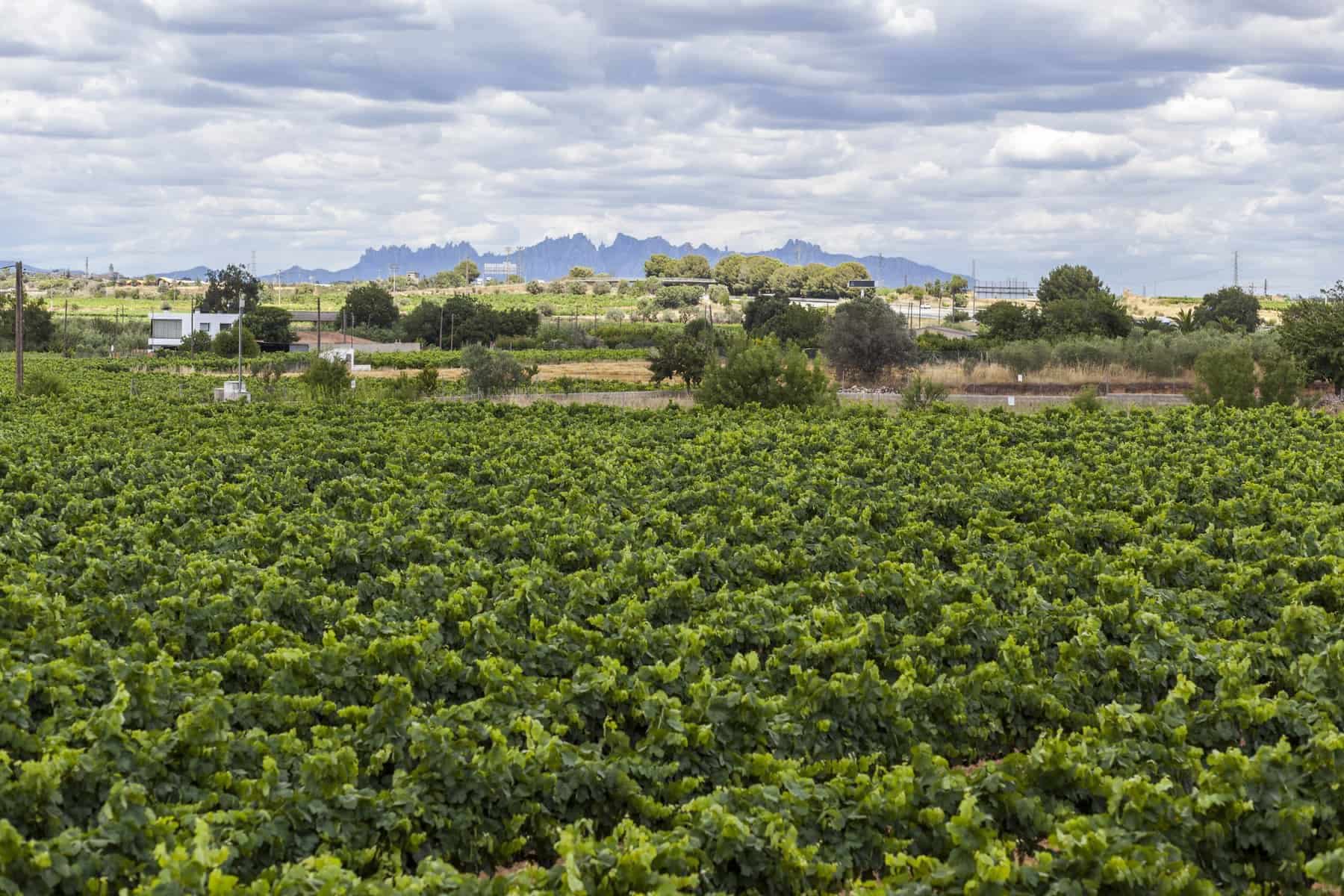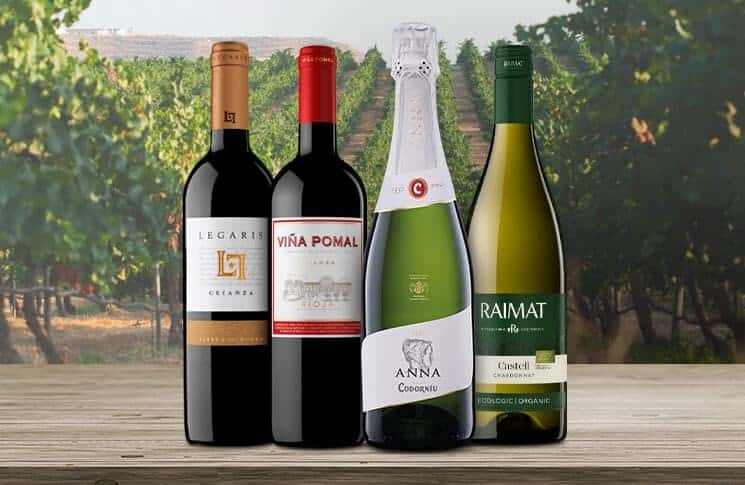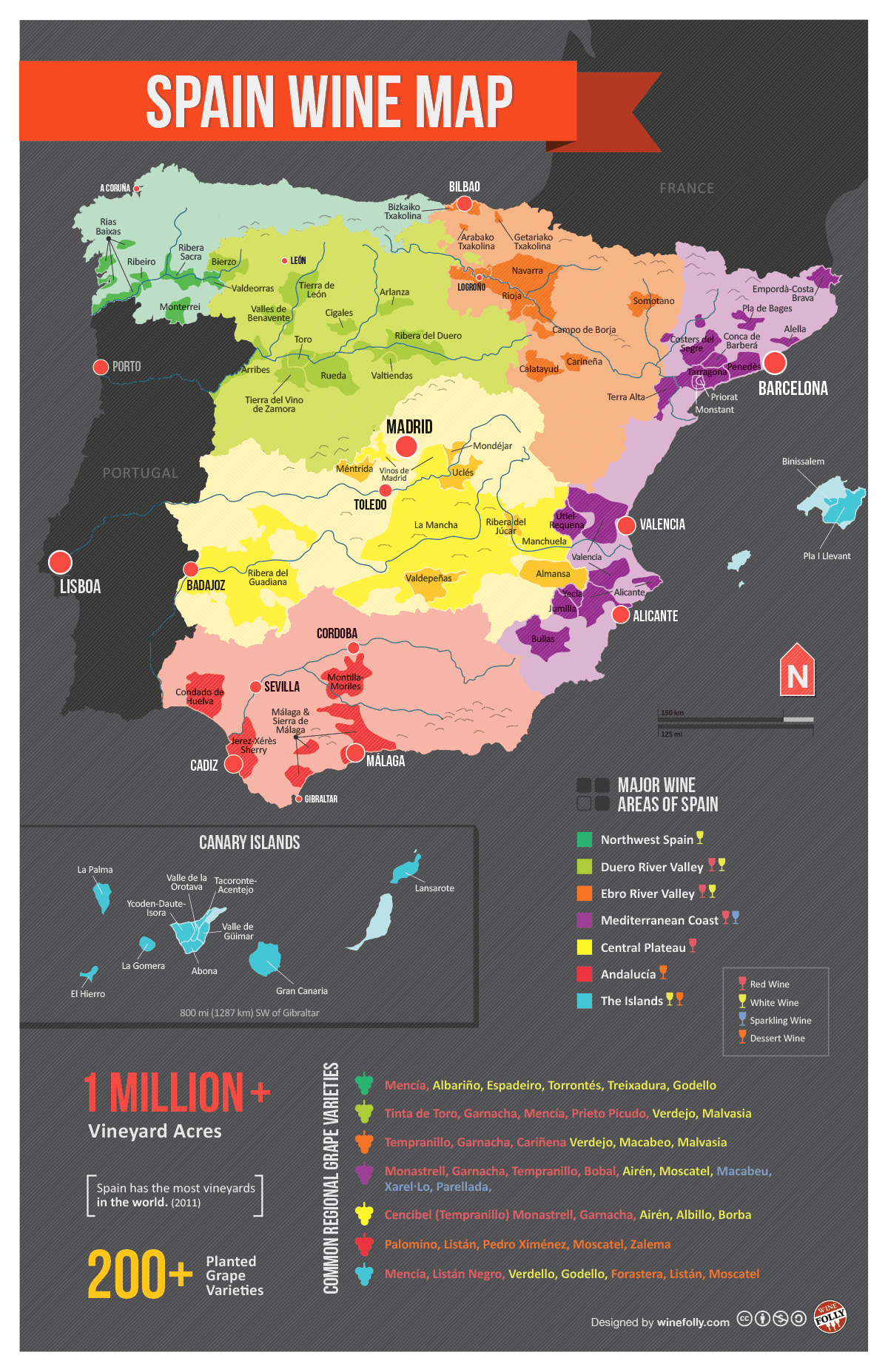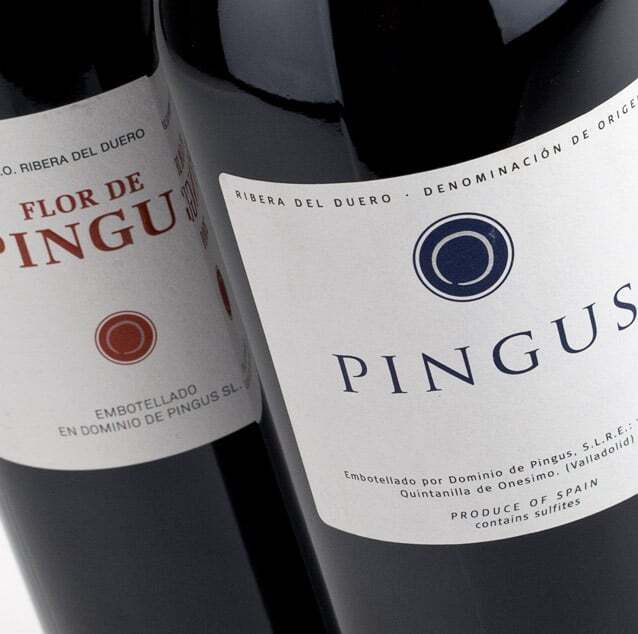Spanish wine regions. Where to go, what to drink and eat, when in Spain.
Spanish wine regions are scenic and worth a journey and Spain is one of the largest wine-producing nations in the world. If you also love Spanish wine or wine as such, this is for you: Use the wine regions as your compass for your next trip to Spain. Let´s dig in.
If the statistics are to be believed, and they are in this case, Spain is the third-largest wine producer in the world, the largest being Italy and France. There is a large region dedicated to the wine produced in Spain, however, due to the infertile lands and the wide spacing of the crops, the production is low. This is the main reason, why Spain ranks third.

Vineyard, Spain
More than six hundred varieties of grapes
There are more than six hundred varieties of grapes planted in Spain for the production of wine, however, most of the wine is produced from the twenty main types of grapes. This production amounts to almost eighty percent of the total wine production in Spain. Spanish wine was widely exported during the Roman Empire. Speaking of the main crops in Spain, after cereals and the olive tree, the grape is the one that is grown in the greatest quantity in Spain. After all this too, it is still the third-largest wine producer. The reason, apart from those mentioned above, is the dry climate of the nation.

Artisan products and foods from Asturias, Spain
The techniques and methods for making Spanish wine are usually the most orthodox and traditional methods that have been used for centuries. Using these old methods, as little human interference as possible is employed. The end result is that enough wine is produced to make Spain the third largest wine producer, but it also makes Spain the largest wine consumer. Every year, Spaniards consume more than 40 liters of wine per person!
Spanish food, we love, from from tapas to paella
This European powerhouse wine producer has more wine-cultivated land than any other nation in the world with nearly 3 million acres of land dedicated to grapevines.
Rioja, the most well-known of the Spanish wine regions
Many things come to mind when we consider Spanish wines, but at the mention of La Rioja, the first thing is the wine that carries this brand. Actually, the two are connected since it is a brand whose origin is this area. La Rioja is a small autonomous community in the country of Spain. It is on the southern Basque slope and very close to the Ebro Valley. Although it is a small region, La Rioja is a great place to be on vacation.
The Riojan capital is called Logroño. It is the economic and geographic administration center of the region. It also has several things that will be fascinating to you.
The Haro area sees a lot of wine production. It is a very popular place and many people come here every year to taste wines. There is also an event that attracts a lot of people. It happens once a year. It is an event that basically fights with wine. People usually go to the site of the wine battle dressed mainly in white. They flock by the thousands and then the battle begins. When people leave this region, the originally white garments are soaked in red wine. It’s an event worth trying, especially if you love to have fun.
The great Camino de Santiago also partly passes through this region. It is an area of La Rioja that you must visit while you are in the region. Here there are many monasteries with great artistic importance, as well as historical and cultural traces. Here the first words in Spanish were written.
The great pilgrimage route is incredibly beautiful, particularly in those areas where villages exist. Most of the settlements here were the work of the Romans and they are still very impressive though they have been standing for a long time.
The area around Tierra De Cameros is another great spot. The scenery here is so surprising you’re going to be delighted when you drive by. This area also boasts grottoes and large caves.
If you’re a person deeply interested in rural tourism, your region of choice is La Rioja. It is a place where you can practice such activities as hiking, hunting, climbing, and fishing.
The Camino de Santiago or Camino de Santiago, along with wines, is also a great protagonist in this region; the route crosses the entire area including the capital Logroño and two of its most interesting cities, Nájera and Santo Domingo de la Calzada. There is a spectacular Parador in the latter and a church with one of Spain’s highest and most beautiful baroque towers. San Millán de la Cogolla is a place of great stunning features with two monasteries: the Suso, known as the one above, with Moorish architecture and the Yuso from the 16th century, known as the one below, which somehow resembles the Monastery. For El Escorial and houses glosses of the Emilianenses containing the first words written in Castilian.

San Lorenzo mountain as background, La Rioja, Spain
Not far away, in the mountains, is Ezcaray, an amazing town with a certain Basque smell, cheerful and vibrant, chosen as a summer vacation spot by many of La Rioja and Basques. The Valdezcaray ski resort is taller up the mountain. The mountain ranges of Ezcaray are filled with oak and beech and are generous in autumn offering a great variety of mushrooms for fans.

Tolosa Spain with incredible wine history
Fans of big game hunting like the wild boar, roe deer and deer flock to Tierra de Cameros in the mountains that divide La Rioja from Soria province in Castilla y León, one of the most spectacular mountain sceneries with the greatest ecological benefit. Around the peninsula.

Penedes wine cava region,at background Montserrat mountain. Vilafranca del Penedes, Catalonia,Spain.
Spanish wines from classic Penedès
The Penedès wine region lies concealed among the coastal hills to the southwest of Barcelona. Considered in popularity by many a close second to Rioja, it is also one of the oldest wine-producing regions throughout Europe. Penedès is best known for its sparkling cavas in an area where white grape varieties predominate but is also highly respected for its oak-aged reds and white wines of the stature of the winery Torres en Pacs.

Codorniu, Penedes Spain, is the oldest business in Spain. Codorníu is the second-largest producer of Cava, the Spanish traditional method of sparkling wine. Founded in 1551 near Barcelona, Spain, it is the oldest company in the country and one of the oldest wineries worldwide.
Spanish Wines enthusiasts visiting Barcelona will consider a short excursion from the city to this popular wine region, which focuses on the towns of Vilafranca del Penedès and Sant Sadurní d’Anoia, southwest of the Catalan capital.
The region’s most emblematic wine is Cava, Spain’s most famous sparkling wine. In an area between Barcelona and Tarragona, Catalonia owns 90% of the output of cava; the remaining 10% are spread among other regions. 1 Day Wine Tours from Barcelona offers a great opportunity to learn about the cultivation of cava and to visit some of the region’s most popular cava and wine producers if you don’t have much time to do the entire route yourself.
Enjoy getting lost in the gentle paths that curve the Penedès vineyards, and ponder the picture of a large garden where the fruit is grown, the grape, which is shipped around the world. For anyone interested in wine culture it is truly a masterpiece.
Taking a walk through Vilafranca ‘s impressive Gothic core, be sure to enjoy the magnificent views of Penedès. From the Santa María bell tower, enter the Museum of Wine or simply take a walk along the Ramblas. You might discover Vilafranca’s Modernism, or even do ‘pinya amb els castellers’ (a group of people around the towers). All of them are the unique and unmissable sensations of a city full of history and modernity, open and welcoming.
Spanish wine regions in Northwest Spain. Monforte de Lemos, Galicia
Northwest Spain is home to the magnificent Galicia, whose capital is Santiago de Compostela, a beautiful city. The area’s history is violent; Visigoths, Romans, Moors and Vikings have invaded the area and in the past tried to conquer it at some stage.
The Ribeira Sacra is one of Galicia’s most prestigious places. Together, its rivers, landscape, Romanesque monumental wealth, and Mencía grape cultivation form an attractive complex, with an increasing number of tourists.
Monforte de Lemos is in the geographical heart of this area, which is also the only town. It is the ideal place to discover the Ribeira Sacra for this reason, as its central location will allow you to plan your trips in a comfortable and balanced way.
Since Roman times wine has been produced in this part of the Sacra Ribeira.
The Ribeira Sacra is composed of a score of councils divided between southern Lugo province and northeastern Ourense province. The countryside is united with wine (D.O. Ribeira Sacra) and monastic traditions. Monforte de Lemos is the largest population center in the Ribeira Sacra and is also the main center with all the facilities a tourist may need, so Monforte is the ideal base from which to explore the Ribeira Sacra.
Another point of interest is the Monforte bridge or “Ponte Vella” over the river Cabe, credited to the Romans but with a new 16th century design, retaining medieval details.
Among many recreational activities, Monforte de Lemos offers hunting and fishing, canyoning, cycling, hang gliding, climbing, and especially hiking along trails, among which the Camino de Santiago ‘s southern route is notable.
Spanish wines from the Navarra region
Navarra ‘s autonomous community extends from the central Pyrenees through a variety of landscapes into the Ebro Valley. The spectacular northern mountains give way to rolling green hills, and to an arid plain in the south. In the southern part of the region, between Pamplona and the plain, are the DO Navarra vineyards. Practically unique in the Iberian Peninsula, this location is marked by the confluence of Atlantic, Continental and Mediterranean climates.
Navarra is one of Spain’s most recognized Denominations of Origin. There are several wineries making DO Navarra wine, but also wines which are part of DO Rioja.
Navarra wines are generally aromatic, with fruity flavors, and a good balance between alcohol content and acidity and palate smoothness. White wines have shades of yellow, fine aromas and fresh flavors. For their part, rosé wines are well-deserved for their unmistakable personality: they are dry, fresh and delicate. Equally exquisite are the reds made in those Denominations of Origin. The most prevalent grape in the region is the variety Garnacha.
You will come across one of the many corners of the Camino as you travel through the Navarre region: the fountain of wine. The Irache Monastery and its attached winery, the Irache Wineries, was established in 1891, are situated in the small Navarran town of Ayegui. The wine fountain was created to motivate Santiago’s fatigued followers where the pilgrims were filled. Scallop shells from the monastery, and sacred wine bottles.
You cannot leave Navarro without visiting the ‘Navarra Vine and Wine Exhibition Center,’ also known as the ‘Wine Museum,’ situated in the Holy Angel’s old Palace of the 18th century, which is now a state-owned hotel. The Wine Center is located in the town of ‘Olite,’ but the tour and immersion in Navarra ‘s wine culture are definitely worthwhile to take.
Famous Spanish wine regions along the Duero river
The Duero River Valley is the birthplace of some of the country’s best red wines, and home to Spain’s most popular winery, Vega Sicilia. It is also the home of the most famous newest super wine in Spain: Pingus. Dominio de Pingus is a small producer in the Ribero del Duero region in Spain. First made in 1995, it immediately developed a cult status following rave reviews from Robert Parker in the Wine Advocate, and is now regarded as one of the greatest wines made in Spain made by Danish Peter Sicek, hotly sought-after and priced accordingly.
This region, which is part of the Spain-Portugal border, is driven by Tempranillo, the most widely planted grape in the whole country, producing bold red wines from Toro, Ribera del Duero and León. The mineral white wine Verdejo is also grown in Rueda.
Over 1000 years ago the Phoenicians introduced the region to wine. From there, the Roman Empire recognized the privileged conditions for winemaking in the region, and established vineyards there to supply wine to its troops, and there is evidence of its influence across the region. The Catholic Church has taken over winemaking in Ribera, after the Romans. This explains why the monasteries and churches are situated in many significant Ribera wineries.

Vega Sicilia vintage wines
Although the region has been producing wine for thousands of years, it was recognized under its own appellation only recently.
This historic region has a variety of non-wine entertainment to sell. Salamanca, Segovia and Ávila are UNESCO World Heritage Sites within Castilla y León, a short walk from the Ribera del Duero. Our party had taken a walking tour of Valladolid, Spain’s capital, decades before heading to Madrid. It is the place where Fernando and Isabel were married, and where Christopher Columbus died as well.
Smaller towns deliver charms too. A ship-shaped castle floats on top of a hill overlooking the city above the charming town of Peñafiel, where bullfights are held periodically on the town square. And inside, a beautiful museum of wines awaits.
The city of Aranda de Duero is the Ribera del Duero’s unofficial capital. A labyrinth of interconnected wineries, some of them carved out of pure rock, stretches under its cobbled streets.
We will add more districts, as we develop this section of Food & Wine.
Wine glasses to contain your enjoyment of wine
Travel to Spain
Barcelona, the most hip city in Spain?
Costa del Sol, Golf in Spain, where to play
Mallorca, the beautiful island has it all
Visit Spain, the official site
















